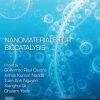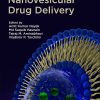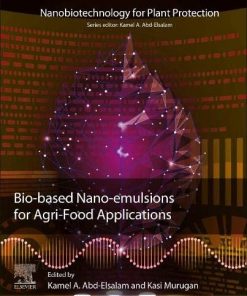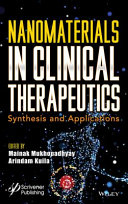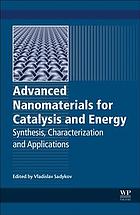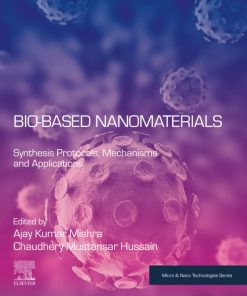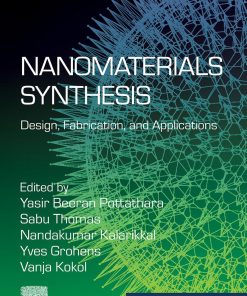Bio Based Nanomaterials Synthesis Protocols, Mechanisms and Applications 1st edition by Ajay Kumar Mishra 0323852951 9780323852951
$50.00 Original price was: $50.00.$25.00Current price is: $25.00.
Bio-Based Nanomaterials: Synthesis Protocols, Mechanisms and Applications 1st edition by Ajay Kumar Mishra – Ebook PDF Instant Download/DeliveryISBN: 0323852951, 9780323852951
Full download Bio-Based Nanomaterials: Synthesis Protocols, Mechanisms and Applications 1st edition after payment.

Product details:
ISBN-10 : 0323852951
ISBN-13 : 9780323852951
Author: Ajay Kumar Mishra
Bio-based Nanomaterials: Synthesis Protocols, Mechanisms and Applications summarizes recent developments in biocompatible and biodegradable materials, including their properties, fabrication methods, synthesis protocols and applications. The extensive use of petrochemicals, rising levels of plastic waste and manufacturing of non-biodegradable materials is a major environmental problem across the globe. Bio-based nanomaterials offer potential alternatives to address these challenging issues. The book covers key bio-based nanomaterials – including chitin, starch and nanocellulose – detailing their core properties, associated fabrication methods and synthesis protocols. Later chapters look at the range of applications for bio-based nanomaterials, from food and agriculture to environmental and biomedical.
This book offers a detailed reference for those interested in sustainable nanoscale materials, including materials scientists, biomedical engineers, environmental scientists, food and agriculture manufacturers and scientists.
Bio-Based Nanomaterials: Synthesis Protocols, Mechanisms and Applications 1st Table of contents:
Chapter 1. Cellulose-based nanomaterials for textile applications
Abstract
1.1 Introduction
1.2 Biomaterials and its sources
1.3 Chitosan, cellulose, banana, and jute fiber derivatives and their advantages
1.4 Nanochitosan, nanocellulose, and natural fibers
1.5 Applications of biobased nanomaterials
1.6 Conclusion and future perspectives
References
Chapter 2. Strategies for sustainable synthesis processes of nanocarbons from biomass
Abstract
2.1 Introduction
2.2 Biomass and carbon nanostructures
2.3 Synthesis processes of biomass-based nanocarbon materials
2.4 Summary and outlook
Acknowledgment
References
Chapter 3. Production of biopolymer-based nanoparticles
Abstract
3.1 Introduction
3.2 Briefs of biopolymers
3.3 Synthesis of biopolymer-based nanoparticles
3.4 Summary and future aspects
References
Chapter 4. Bio-based nanomaterials for properties and applications
Abstract
4.1 Introduction
4.2 Preparation and applications of bio-based nanomaterials
4.3 Future prospects and conclusion
Acknowledgments
References
Chapter 5. Enhanced dye recovery from textile effluents by means of biobased nanomaterials/polymer loose nanofiltration membranes
Abstract
5.1 Introduction
5.2 Materials and methods
5.3 Results and discussion
5.4 Conclusions
Acknowledgments
Data availability
References
Chapter 6. Biodegradation and water absorption studies of natural gum rosin-based hydrogel
Abstract
6.1 Biodegradation of hydrogels
6.2 Methods of biodegradation
6.3 Water-absorption studies
6.4 Results and discussion
6.5 Water absorption properties of hydrogel in soil samples
6.6 Impact of biodegradation of synthesized samples on soil
6.7 Conclusion
References
Chapter 7. Nanobiochar—a green catalyst for wastewater remediation
Abstract
7.1 Introduction
7.2 Modification of surface properties of biochar
7.3 Properties intricate in reactive species and radical generation
7.4 Biochar-based catalysts for wastewater treatment
7.5 Conclusions
References
Chapter 8. Polyhydroxyalkanoates based systems: the future of drug delivery and tissue engineering devices
Abstract
8.1 Introduction
8.2 Biosyntesis, main features, chemical modifications, degradation, and general applications of polyhydroxyalkanoates
8.3 Polyhydroxyalkanoates for drug delivery systems design
8.4 Polyhydroxyalkanoates as tissue engineering materials
8.5 Perspectives and challenges
8.6 Conclusion
Acknowledgments
References
Chapter 9. Advanced applications of biomass for energy storage
Abstract
9.1 Introduction
9.2 Materials used for energy storage devices
9.3 Energy storage mechanism in carbon-based materials
9.4 Biomass-derived carbon for energy storage applications
9.5 Summary and outlook
References
Chapter 10. Sericin-based nanomaterials and their applications in drug delivery
Abstract
10.1 Introduction
10.2 Properties of sericin
10.3 Sericin-based biomaterials and their biomedical applications
10.4 Therapeutic potential of sericin-based nanomaterials in drug delivery
10.5 Clinical application of sericin-based biomaterials
10.6 Future perspectives and conclusions
Author contributions
Conflicts of interest
Acknowledgments
References
Chapter 11. Bone tissue restoration by nanoscale features of biomaterials
Abstract
11.1 Introduction
11.2 Formation of a blood clot on a biomaterial during bone healing
11.3 Osteogenic differentiation of stem cells induced by biomaterials: mechanism and pathways
11.4 Neovascularization during bone healing
11.5 Bone apposition stimulation induced by surface properties of biomaterials
11.6 New trends in biomaterials development: bioinspired stratified scaffolds
11.7 Outlooks and perspectives
Acknowledgments
References
Chapter 12. Toxicological effect of biopolymers and their applications
Abstract
12.1 Introduction
12.2 Classification of biopolymers
12.3 Properties of biopolymers
12.4 Relative properties
12.5 Synthesizing properties
12.6 Component properties
12.7 Synthesis of biopolymers
12.8 Starch
12.9 Cellulose
12.10 Chitin and Chitosan
12.11 Gelatin
12.12 Polylactic acid
12.13 Poly(vinyl alcohol)
12.14 Polyurethanes
12.15 Poly(hydroxyalkanoates)
12.16 Poly(ε-caprolactone)
12.17 Toxicological effect of biopolymers
12.18 Applications of biopolymers
12.19 Synthesis of nanomaterials
12.20 Synthesis of nanocarriers
12.21 Biomedical field
12.22 Adsorbents for environmental remediation
12.23 Agricultural domain
12.24 Food industry
12.25 Conclusion
People also search for Bio-Based Nanomaterials: Synthesis Protocols, Mechanisms and Applications 1st:
bio based nanomaterials
biological properties of nanomaterials
what are organic nanomaterials
what are natural nanomaterials
bio-based materials
Tags: Bio Based, Nanomaterials, Synthesis Protocols, Mechanisms, Applications, Ajay Kumar Mishra
You may also like…
Biography & Autobiography - Entertainment Biography
Engineering - Industrial Engineering & Materials Science
Engineering
Environmental Applications of Carbon Nanomaterials-Based Devices 1st. Edition Shadpour Mallakpour
Technique - Nanotechnology
Bio-Based Nanoemulsions for Agri-Food Applications 1st Edition Kamel A. Abd-Elsalam
Engineering - Bioengineering
Nanomaterials in Clinical Therapeutics. Synthesis and Applications 1st Edition Mainak Mukhopadhyay
Engineering
Technique - Nanotechnology


